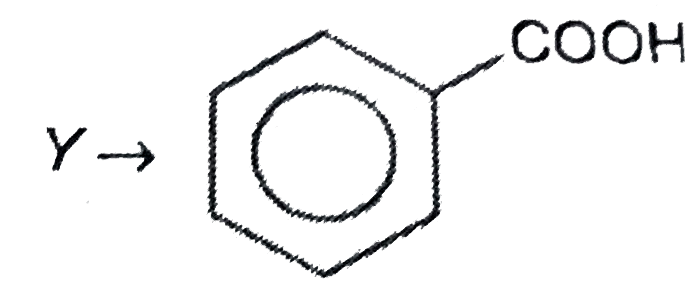Compound which forms an orange red precipitate with 2, 4 - DNP reagent and gives yellow precipitate on heating with iodine in the presence of sodium hydroxide is
The correct Answer is:B
Topper's Solved these Questions
Similar Questions
An organic compound (A) with molecular formula C8H8O forms an orange red precipitate with 2,4 -DNP reagent and gives yellow precipitate on heating with iodine in the presence of sodium hydroxide . It neither reduces Tollen's reagent or Fehling's solution , nor does it decolourise bromine water or Baeyer's reagent. On drastic oxidation with chromic acid, it gives a carboxylic acid (B) having molecular formulae C7H6O2. Identify the compound (A) and (B) and explain the reactions involved .
View SolutionAn organic compound (A) with molecular formula C8H8O forms an orange red precipitate with 2,4 -DNP reagent and gives yellow precipitate on heating with iodine in the presence of sodium hydroxide . It neither reduces Tollen's reagent or Fehling's solution , nor does it decolourise bromine water or Baeyer's reagent. On drastic oxidation with chromic acid, it gives a carboxylic acid (B) having molecular formulae C7H6O2. Identify the compound (A) and (B) and explain the reactions involved .
View Solution
Knowledge Check
An organic compound (A) with molecular formula C8H8O forms an orange red precipitate with 2,4 -DNP reagent and gives yellow precipitate on heating with iodine in the presence of sodium hydroxide . It neither reduces Tollen's reagent or Fehling's solution , nor does it decolourise bromine water or Baeyer's reagent. On drastic oxidation with chromic acid, it gives a carboxylic acid (B) having molecular formulae C7H6O2. Identify the compound (A) and (B) and explain the reactions involved .
A B
B C
C D
D
An aldehyde that does not give red precipitate on heating with Fehling's reagent is
AmethanalBethanalCbenzaldehydeDpropanal
An organic compound [A] with molecular formula C9H10O forms an arage-red precipitate [B] with 2,4 DNP reagent. Compound [A] gives yellow precipiatate [C] on heating wihth iodine in the presence of soedium hydroxide along with a colourless compound [D]. The compound [A] does not reduce Tollen's reagent or Fehling's solution nor does it decolourise bromine water or Baeyer's reagent. On drastic oxidation with chromic acid, compound [A] gives a crboxylic acid [E] having molecular formula C7H6O2. Deduce the strcutres of the organic compounds [A] to [E].
View SolutionAnorganic compound (A) having molecular formula C9H10O forms an orange red precipitate (B) with 2,4-DNP reagent. Compound (A) gives a yellow precipitate (C) When heated in the presence of iodine and NaOH alongwith a colourless compound (D). (A) does not reduce Tollens' reagent or Fehling solution nor does it decolourise bromine water. On drastic oxidation of (A) with chromic acid, a carboxylic acid (E) of molecular formula C7H6O2 is formed. Deduce the structures of the organic compounds (A) to (E ).
View SolutionAnorganic compound (A) having molecular formula C9H10O forms an orange red precipitate (B) with 2,4-DNP reagent. Compound (A) gives a yellow precipitate (C) When heated in the presence of iodine and NaOH alongwith a colourless compound (D). (A) does not reduce Tollens' reagent or Fehling solution nor does it decolourise bromine water. On drastic oxidation of (A) with chromic acid, a carboxylic acid (E) of molecular formula C7H6O2 is formed. Deduce the structures of the organic compounds (A) to (E ).
View SolutionAnorganic compound (A) having molecular formula C9H10O forms an orange red precipitate (B) with 2,4-DNP reagent. Compound (A) gives a yellow precipitate (C) When heated in the presence of iodine and NaOH alongwith a colourless compound (D). (A) does not reduce Tollens' reagent or Fehling solution nor does it decolourise bromine water. On drastic oxidation of (A) with chromic acid, a carboxylic acid (E) of molecular formula C7H6O2 is formed. Deduce the structures of the organic compounds (A) to (E ).
View SolutionA carbony compound of formula C9H10O(A), which is a benzene derivative gives orange precipitate with 2,4-D.N.P. and also gives yellow precipitate with I2 in presence of aqueous NaOH. The total no. of isomers possible for 'A' are _____________
View SolutionA carbony compound of formula C9H10O(A), which is a benzene derivative gives orange precipitate with 2,4-D.N.P. and also gives yellow precipitate with I2 in presence of aqueous NaOH. The total no. of isomers possible for 'A' are _____________
View Solution
